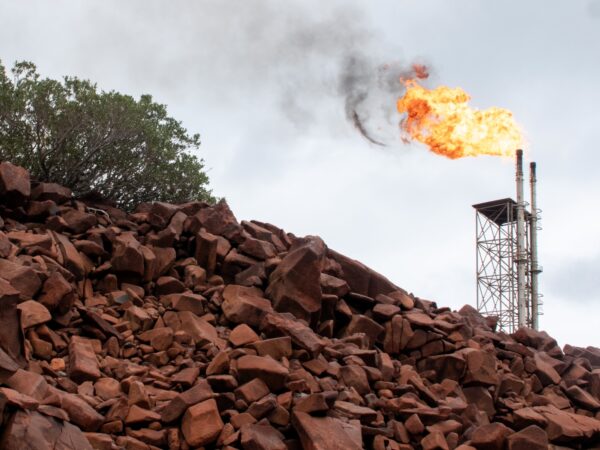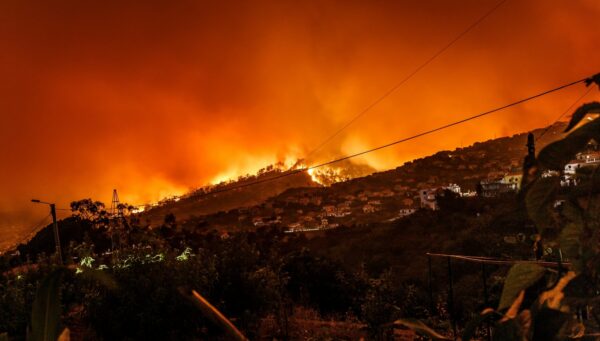No time for complacency: without closing the 2030 gap, net zero targets cannot prevent severe climate impacts
Share

The Glasgow Climate Pact doubled down on the commitment from 197 countries to limit global warming to 1.5°C, but current 2030 targets are insufficient to get us there. Instead, they would lead to 2.4°C of warming by the end of the 21st century.
Mid-century net zero commitments and promises could theoretically limit global warming to 1.8°C by 2100, without the strengthening of present 2030 targets. But this is based on very optimistic assumptions about the full implementation of long-term net zero targets that are not backed by near-term policies or targets.
With the Mitigation Work Programme, which is focussed on accelerating emissions reductions by 2030, yet to be fully defined, it is important to reaffirm why near-term action before 2030 is so critical to avoiding the worst impacts from climate change.
Ultimately, when looking at the impacts of climate change a 1.8°C warming following a highly optimistic interpretation of net zero targets does not represent progress in terms of the immediate need to tackle the grave risks of climate change. In fact, in a 1.8°C scenario represents delayed action to 2030.
Without deep 2030 emission reductions climate impacts would increase largely unchecked for at least 30 years, exceeding the 1.5°C limit and leading to irreversible changes to our climate system. For COP27 president Egypt, for example, projected 2050 flood losses under a 1.8°C pathway are almost 3 times higher than if warming was limited to 1.5°C.
At COP26, governments doubled down on the urgent need to increase mitigation ambition and made an unambiguous commitment to 1.5°C. The Glasgow Climate Pact, adopted at the end of 2021, “resolves to pursue efforts to limit the temperature increase to 1.5°C”, and “recognises that this requires accelerated action in this critical decade”.
The Paris Agreement, signed in 2015, requires countries to set and update their Nationally Determined Contributions (NDCs), which are climate targets for 2030, and represent ambition in the near term. The Intergovernmental Panel on Climate Change (IPCC) is clear that global greenhouse gas emissions must be halved by 2030 to limit warming to 1.5°C.
At present these NDC commitments are not aligned with required emissions reductions. There is a remaining emissions gap of 17-20 GtCO2e, which is in line with seeing temperatures rise to 2.4°C by 2100. At this level of warming, climate change would inflict devastating impacts all around the world, and become an existential threat to vulnerable countries such as small island developing states and least developed countries.
Meanwhile, a growing number of governments committed to action in the long term, by setting 2050 net zero emissions targets. Analyses suggest that this could lead to an end-of-century global warming of 1.8°C, but highlights that there is a substantial credibility gap on the implementation of these targets.
Net zero commitments, while promising, are only meaningful if linked to corresponding and fully implemented emissions reduction targets in the near term – in other words, by 2030. This raises the question of how countries that fail to pursue ambitious mitigation action before 2030 will be able to implement drastic emissions reductions after 2030, especially as some of these measures would need to be even more stringent at that stage.
But more critically, delayed mitigation action until after 2030 would lock in climate change impacts and blow past the 1.5°C goal of the Paris Agreement.
In a 1.5°C scenario, the average rate of warming over the next 20 years almost halves compared to today’s pace. But in a delayed action 1.8°C scenario, warming would continue close to current rates until mid-century.

Emissions trajectories to 2030 run along the same line in the 1.8°C and 2030 targets scenarios, before stringent reductions begin in the 1.8°C scenario. This means that much more greenhouse gases will be emitted into the atmosphere in the next few decades, leading to worse impacts. So, a 2100 warming of 1.8°C will not ease the threat posed by severe impacts of climate change emerging to 2050.
Every fraction of a degree of avoided warming in the near-term matters when it comes to limiting impacts and risks. A 1.8°C pathway would be very different from a 1.5°C world in terms of locked-in catastrophic climate impacts and limits to adaptations being reached for the most vulnerable.
It’s all about the impacts
Using the Climate Impact Explorer, we compared the difference in climate impacts by 2050 in a 1.5°C future and a 1.8°C future in different countries around the world (Figure 2). What becomes immediately apparent is that – irrespective of location – we will see significantly higher impacts and damages by 2050 if we delay emissions reductions and embark on a 1.8°C pathway.

For Egypt, the land fraction annually exposed to river floods will almost triple in 2050 if emissions reductions are delayed to after 2030, compared to a 1.5°C pathway. In the United States, 44% higher damages from tropical cyclones are expected per year on a 1.8°C trajectory compared to 1.5°C. And in India, a country that is already facing severe impacts from extreme heatwaves, the number of people exposed to heatwaves will increase by 35% to 192 million people if the world follows a 1.8°C pathway compared to a 1.5°C pathway.
These already large differences in impacts and damages around mid-century would only worsen throughout the 21st century.
The lack of stringent emissions reductions in the near term also has important implications for the scale of adaptation and loss and damage. For every degree of warming, adaptation becomes harder and more costly – and the IPCC’s Working Group II report was clear that above 1.5°C, vulnerable countries will not be able to adapt to some of the impacts of climate change, significantly increasing the scale of loss and damage.
Limiting residual risk and enabling successful adaptation can only be achieved if the world manages to limit warming to 1.5°C with more ambitious emission reductions measures this decade. Embarking on a 1.8°C pathway would render this impossible.











